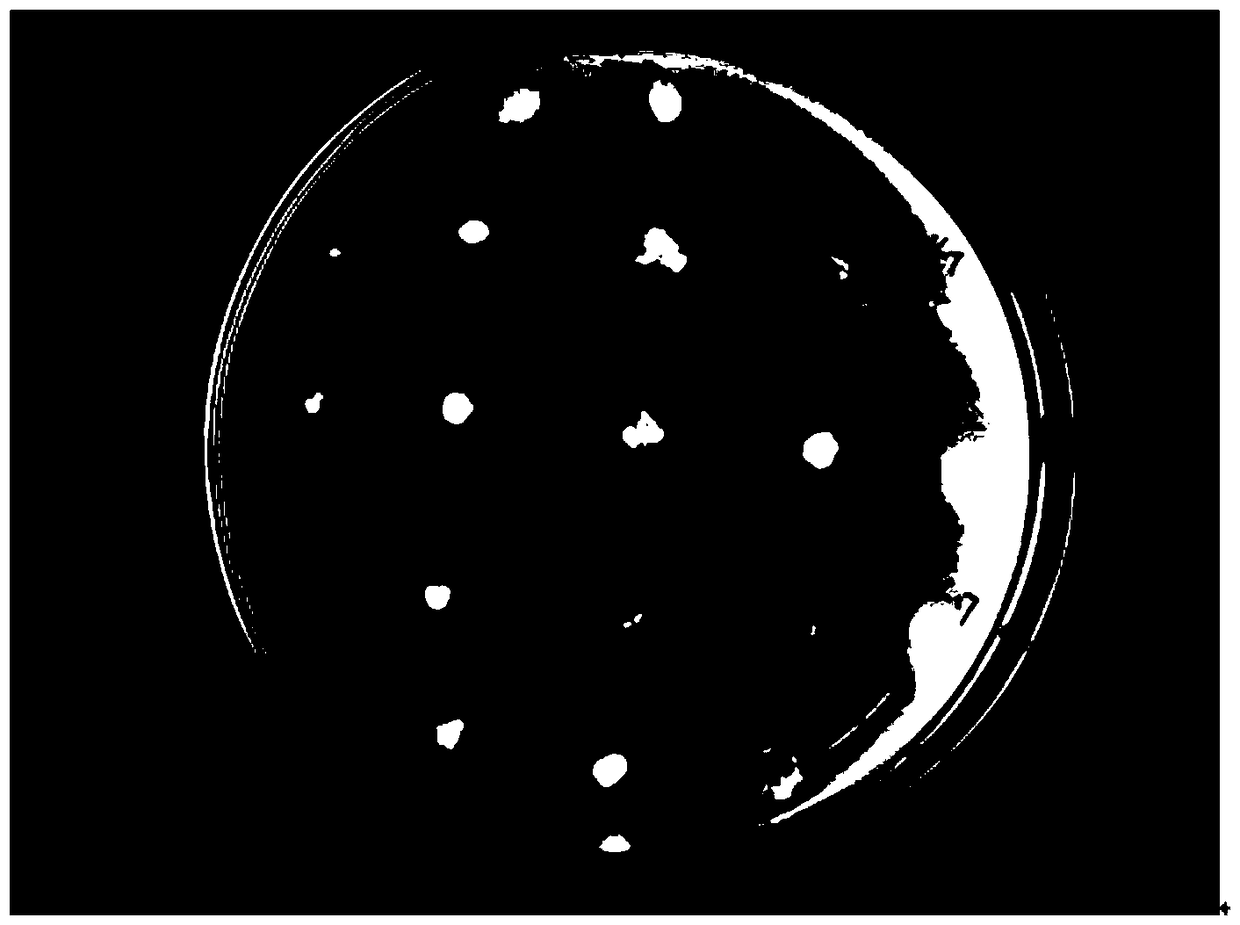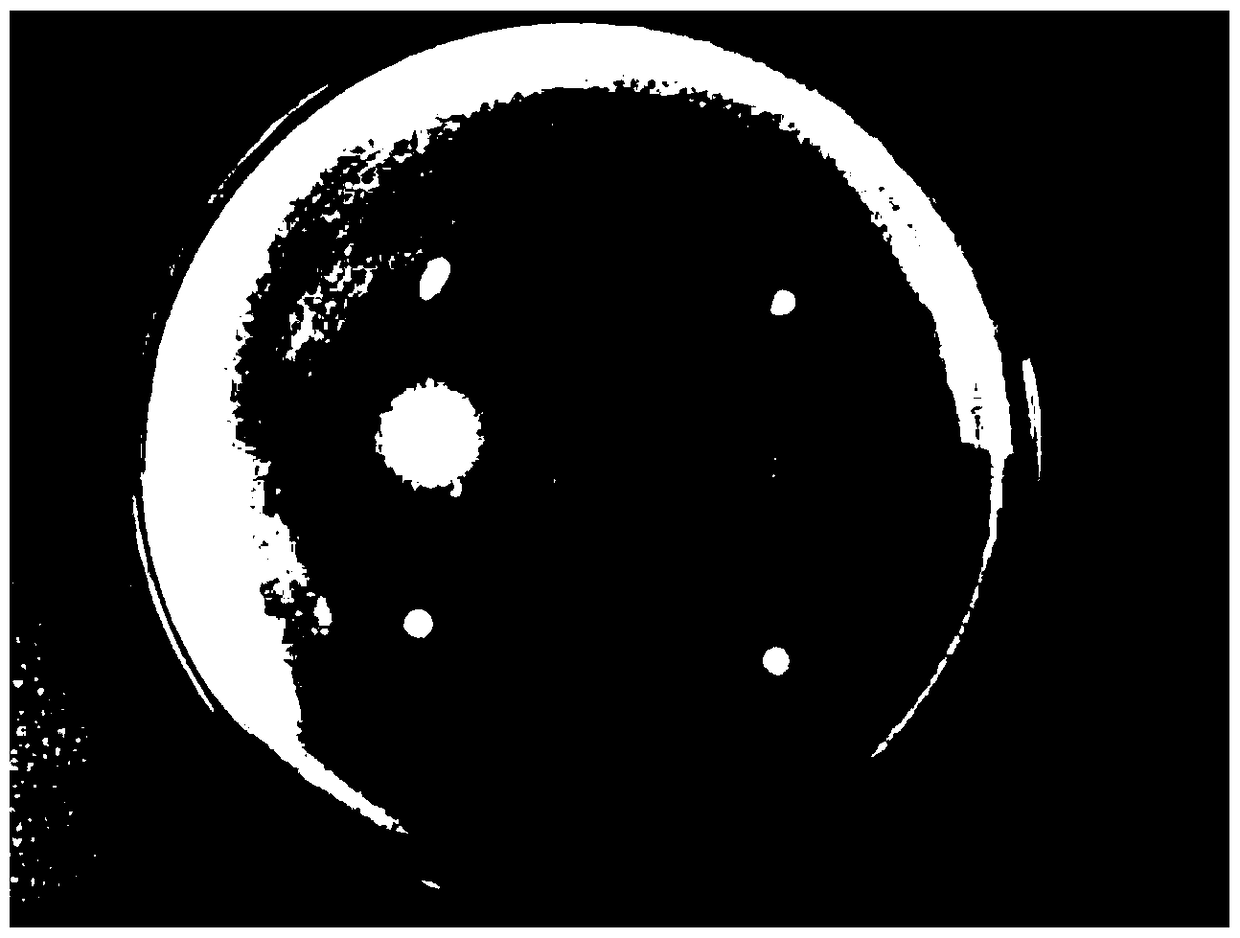Application of a strain of Bacillus amyloliquefaciens and the protease it produces in tanning and hair removal
A technology for dissolving starch spores and protease, applied in the field of microbiology, can solve problems such as COD, BOD value increase, pollution, environmental pollution, etc., and achieve the effect of smooth grain surface and clear pores
- Summary
- Abstract
- Description
- Claims
- Application Information
AI Technical Summary
Problems solved by technology
Method used
Image
Examples
Embodiment 1
[0061] The isolation and identification of embodiment 1 bacteria
[0062] 1.1. Sample collection: soil with rotting animal hair at the outlet of the tannery sewer.
[0063] 1.2. Enrichment: Inject the sampled samples into the enrichment medium and culture for 48 hours, then transfer to the liquid seed medium.
[0064] 1.3. Primary screening of strains
[0065] After culturing in the liquid seed medium for 12 hours, streak the bacterial suspension on the casein selective medium for 24 hours, pick single colonies with hydrolysis circles and inoculate them evenly on the casein selective medium. The colony numbers are №1-37, cultured at a constant temperature of 37°C for 48 hours, and the growth of the colonies and the hydrolysis of casein were observed.
[0066] 1.4. Re-screening of strains
[0067] Pick the colonies with obvious hydrolysis circles and evenly plant them on the solid wool medium, and cultivate them at a constant temperature of 37°C for more than 24 hours, and o...
Embodiment 2
[0100] Example 2 K20 strain physiological and biochemical properties research
[0101] 2.1. Morphological characteristics and staining results
[0102] K20 strain colony morphological characteristics: shape: round, flat. The diameter is about 2mm. Milky white, the surface is dry and smooth, and the edge of the colony is lotus leaf-shaped. See Figure 4 .
[0103] The K20 strain was rod-shaped under the microscope, and it was repeatedly proved that Gram staining was positive (see Figure 5 ). It grows well under aerobic conditions and is an aerobic bacteria. Produce spores, the spores are oval and motile.
[0104] 2.2 Physiological and biochemical characteristics detection results
[0105] Gelatin hydrolysis, aerobic growth, catalase, tyrosine hydrolysis, starch hydrolysis, nitrate reduction, and V-P reaction of K20 bacteria were all positive; phenylalanine dehydrogenase and citrate utilization were negative; available D- Glucose, D-Mannose and Maltose. Growth at 30°C...
Embodiment 3
[0112] The protease depilatory performance experiment result that embodiment 3 K20 bacteria produces
[0113] K20 bacteria was fermented with ② fermentation medium (%) for 72 hours, and the obtained protease-containing fermentation liquid was used for hair removal test. Wherein, ② the composition and content of fermentation medium (%) are as follows: starch: 3.0, K 2 HPO 4: 0.12, asparagine: 0.11, beef extract: 0.05, wool: 0.2pH6.4.
[0114] The experimental results show that the protease produced by K20 bacteria has good depilatory activity on sheepskin, pigskin and cowhide commonly used in tanning (Table 3): among them, the depilation effect on cowhide and sheepskin is the best. The bare skin after depilation is soft, has a softening effect, and has a smooth grain and clear pores.
[0115] The protease depilatory activity that table 3 bacterial strain produces
[0116]
[0117] +Evaluation of hair removal effect, the more +, the better the hair removal effect
[0118...
PUM
| Property | Measurement | Unit |
|---|---|---|
| diameter | aaaaa | aaaaa |
Abstract
Description
Claims
Application Information
 Login to View More
Login to View More - R&D
- Intellectual Property
- Life Sciences
- Materials
- Tech Scout
- Unparalleled Data Quality
- Higher Quality Content
- 60% Fewer Hallucinations
Browse by: Latest US Patents, China's latest patents, Technical Efficacy Thesaurus, Application Domain, Technology Topic, Popular Technical Reports.
© 2025 PatSnap. All rights reserved.Legal|Privacy policy|Modern Slavery Act Transparency Statement|Sitemap|About US| Contact US: help@patsnap.com



